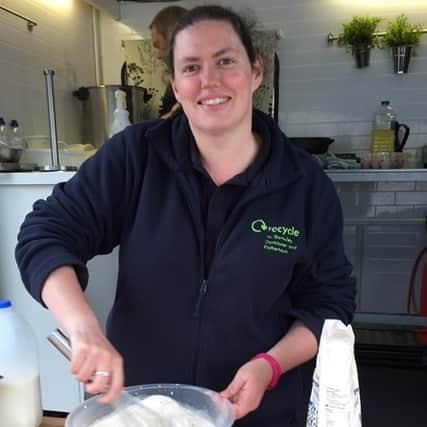Tonnes of food fit for comsumption thrown away by Rotherham householders


Staff at the BDR Waste Partnership analysed rubbish arriving at their site in Manvers and found 37 per cent of pin-lidded bin waste was food and drink — worth an estimated £170 million — with most of it thrown away unnecessarily.
It comes as after study showed while 81 per cent of people in the UK say they are concerned about climate change, only 32 per cent see a clear link with wasting food.
Advertisement
Hide AdAdvertisement
Hide AdTo mark the national Food Waste Action Week, the BDR Partnership aims to raise people’s awareness about the huge impact of household food waste on climate change.
Every year in the UK, 6.6 million tonnes of household food is thrown away — creating nearly 25 million tonnes of CO2 emissions, equivalent to 5.4 per cent of the UK’s emissions.
The majority of this is food which could have been eaten and is worth about £60 per month to the average family with two children.
Manvers-based community education liaison officer, Abi Reid, said previous Love Food Hate Waste campaigns had successfully reduced the amount of food waste thrown away in Barnsley, Doncaster and Rotherham by as much as seven per cent.
Advertisement
Hide AdAdvertisement
Hide AdOur last intensive campaign was in 2017, but since then food waste figures have been creeping up,” she said.
“Our latest analysis of binned food waste shows that 37 per cent of our general waste in BDR is currently made up of food and drink, almost three quarters of it edible or drinkable when it was thrown away.
“This is where we can all make the biggest difference to both the planet and our wallets because it costs the BDR councils more than £2 million a year to dispose of avoidable food waste.
“This is in addition to more than £170 million BDR households are spending on food which is thrown away.
Advertisement
Hide AdAdvertisement
Hide Ad“Each of us can make small changes — saving one slice of bread, one potato, one drop of milk — they all add up to make a big difference for us and our planet.”
Waste Reduction Charity WRAP, which runs the annual Love Food Hate Waste campaign, said the public’s relationship with freezers was frosty.
Spokesperson Sarah Clayton said: “Getting to grips with freezing and defrosting are big factors in preventing food from going to waste at home.
“Freezing and defrosting three commonly thrown away meat items — fresh chicken, bacon and sausages — could reduce waste of those items by as much as 15,000 tonnes a year.”
Advertisement
Hide AdAdvertisement
Hide AdMore top tips, including portion planning, careful shopping, better storage, understanding “use by” and “best before” labels, loving your leftovers, and making the most of your freezer can be found at www.wasteless-sy.co.uk